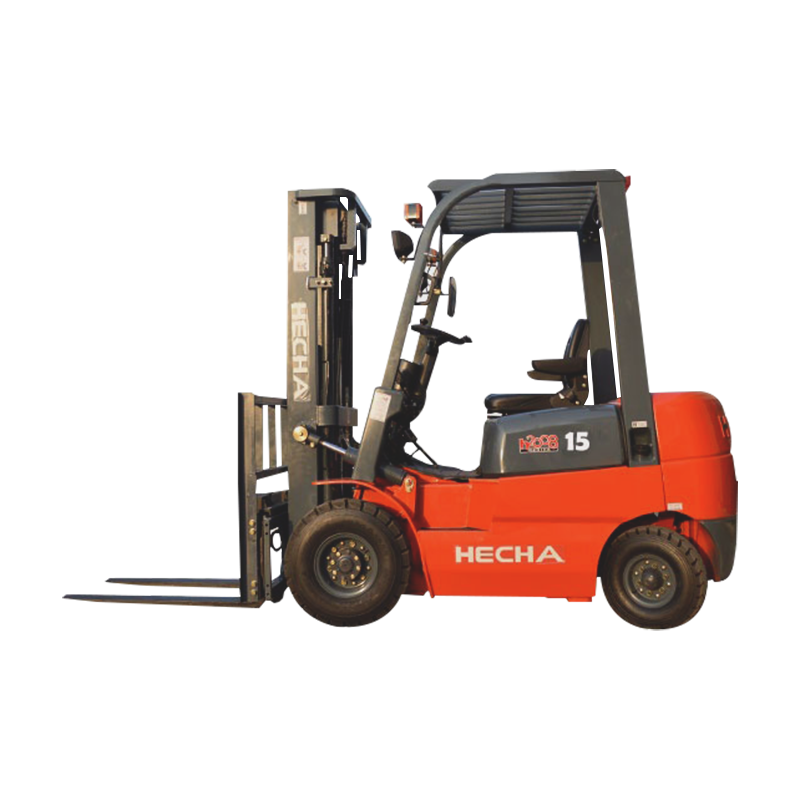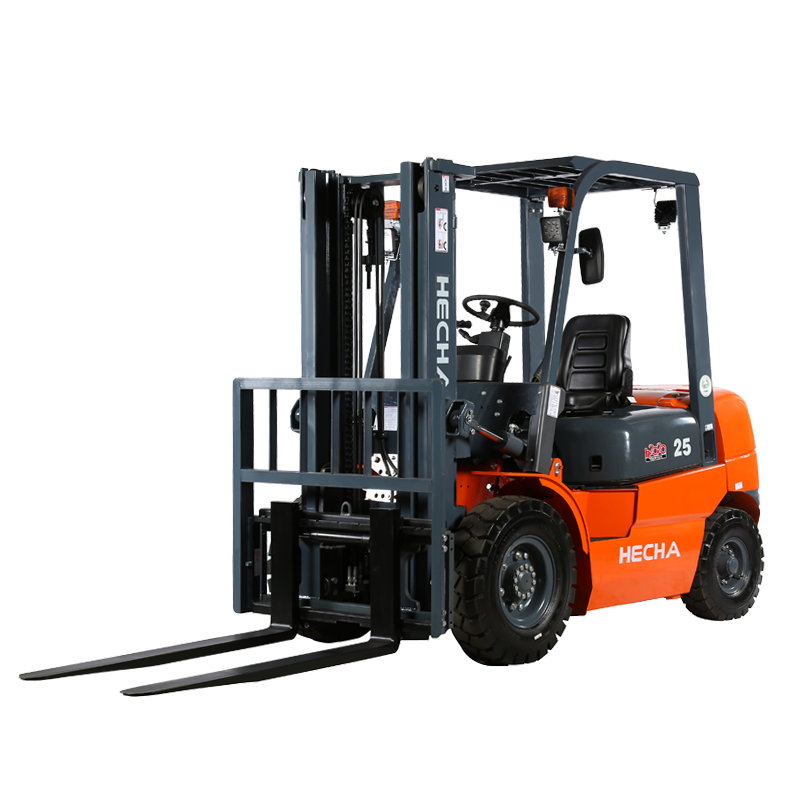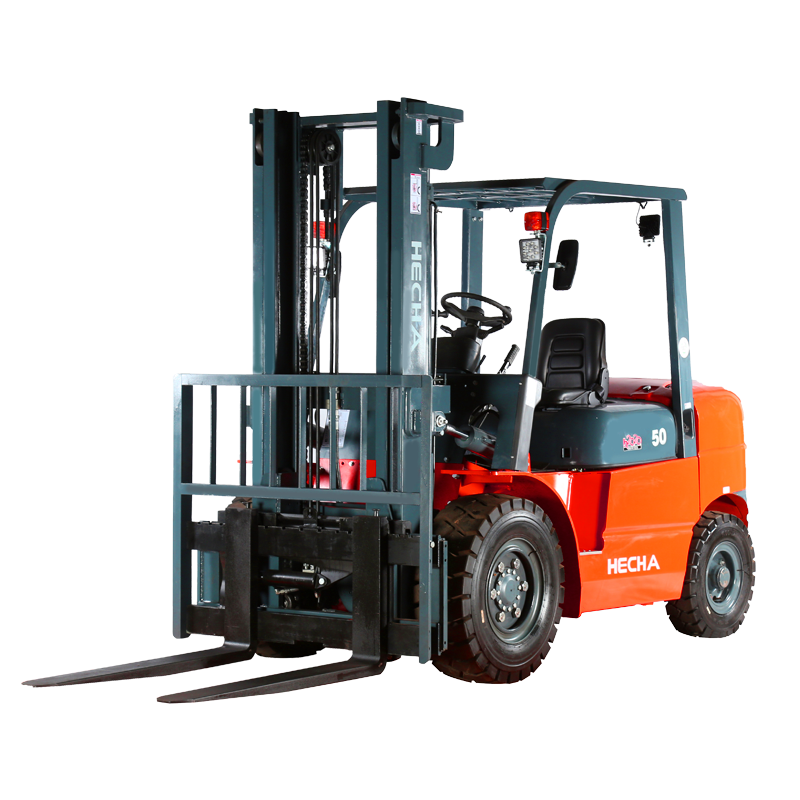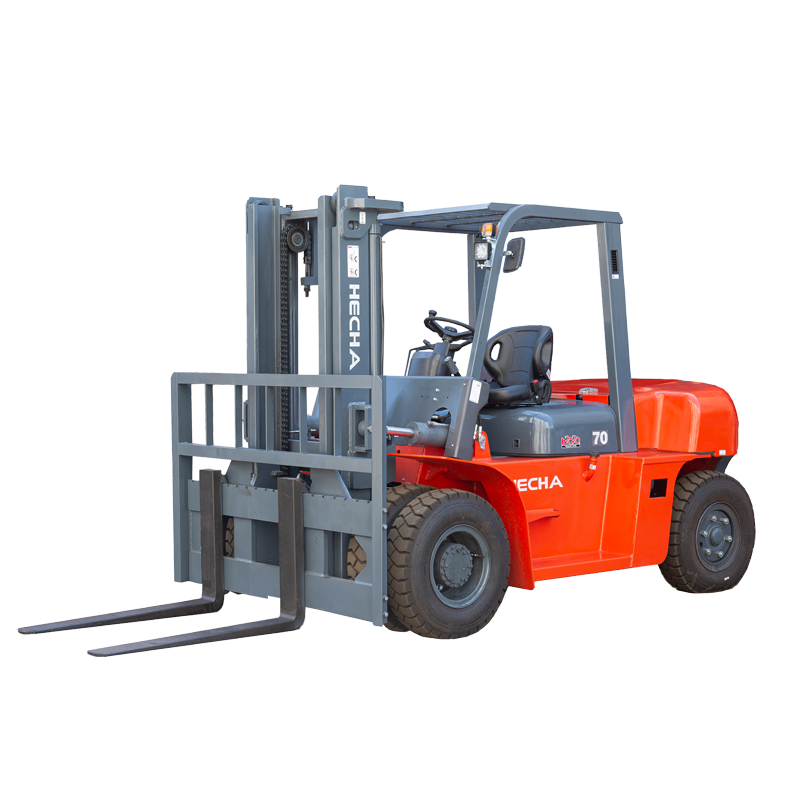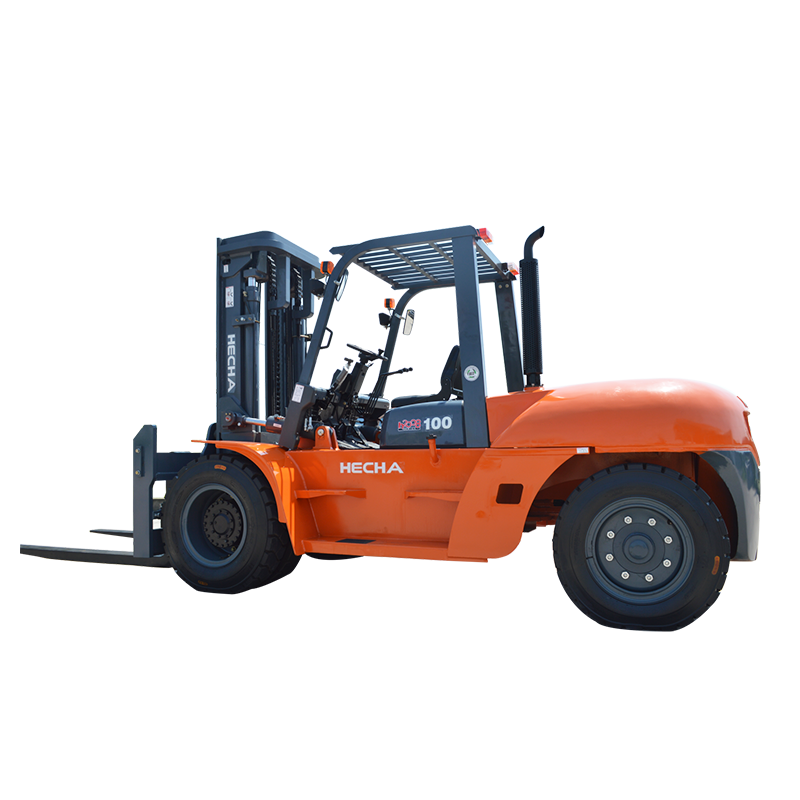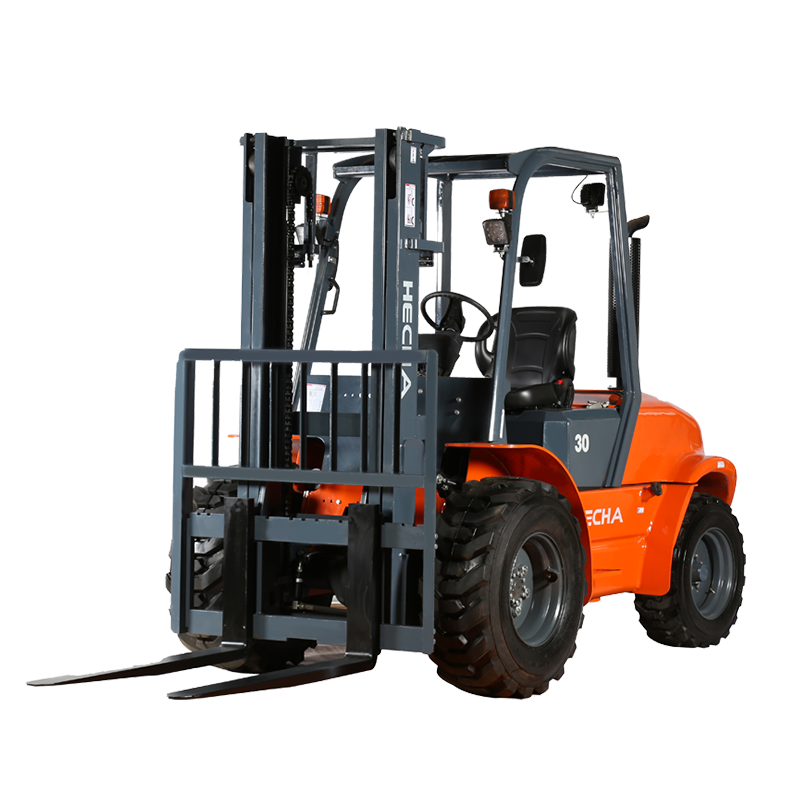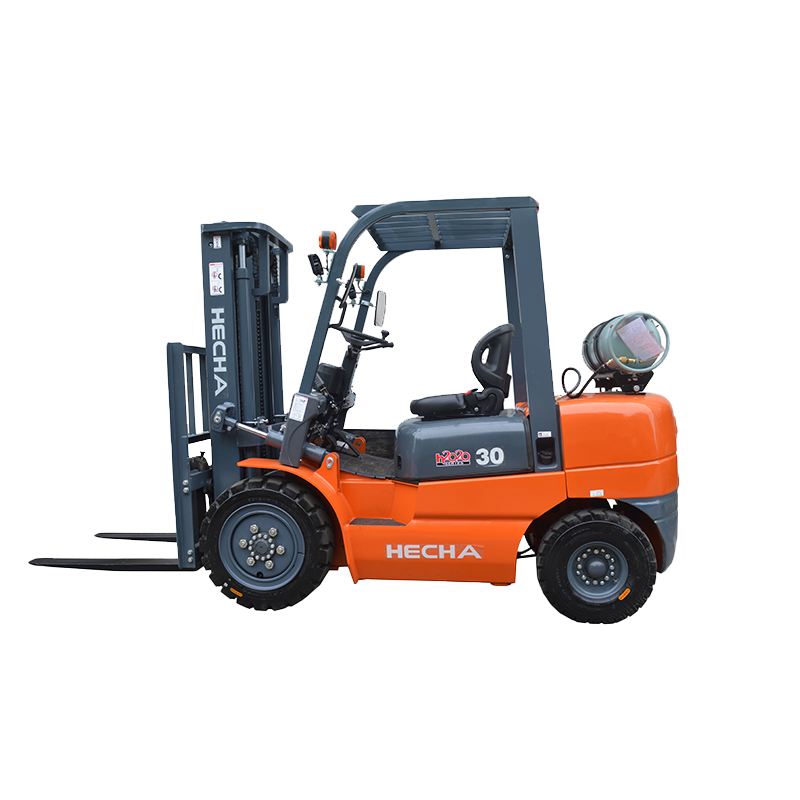In the power transmission system of 5-10 ton heavy forklifts, hydrostatic drive technology has become the key to improving the performance of the whole machine with its efficient energy conversion and precise control capabilities. Compared with the traditional mechanical transmission method, the hydrostatic system greatly reduces the energy loss in the power transmission process through the closed-loop circuit design of the hydraulic pump and the motor, so that the output power of the engine can be more efficiently converted into actual driving force. This technology not only optimizes the operating efficiency of the forklift, but also shows significant advantages in reliability, controllability and adaptability, making it an ideal choice for heavy forklifts to cope with high-intensity and high-frequency operating environments.
The high efficiency of power transmission of the hydrostatic system comes from its unique working principle. Traditional mechanical transmission relies on components such as gears, clutches and torque converters. The power needs to go through multiple stages of conversion, and each link is accompanied by friction loss. Especially under frequent start-stop and speed change conditions, the energy loss is more obvious. The hydrostatic system directly converts the mechanical energy of the engine into hydraulic energy through the closed circulation of the hydraulic oil medium, and then restores it to mechanical energy to drive the wheels through the hydraulic motor. This process almost avoids the friction loss caused by mechanical contact, the power transmission path is shorter, and the response is more direct. In the actual operation of 5-10 ton heavy forklifts, this means higher fuel economy and lower operating costs, especially suitable for places such as ports and logistics centers that require long-term continuous operation.
Another core advantage of the hydrostatic system is its stepless speed regulation capability. Traditional mechanical gearboxes rely on fixed gears to adjust the speed, and frequent gear shifting is required during operation, which not only affects efficiency but also increases the wear of the transmission system. The hydrostatic system can achieve smooth changes in driving speed by adjusting the displacement of the hydraulic pump without interrupting power output. This feature enables the driver to accurately control the travel speed of the forklift according to the actual working conditions, and can maintain the consistency of power output whether it is low-speed precision loading and unloading or high-speed unloaded driving. For heavy forklifts, this delicate controllability is particularly important, especially in narrow spaces or high-precision handling tasks, which can effectively reduce operating errors and improve operational safety.
In addition, the adaptability of the hydrostatic system under complex working conditions is also better than that of traditional transmission methods. Heavy-duty forklifts often face high-load and changeable working environments. Mechanical transmission systems are prone to impact when suddenly loaded, and long-term use may cause premature fatigue of key components such as gears and bearings. The hydrostatic system, with the compressibility of the hydraulic medium, can naturally buffer the impact load and protect the transmission mechanism from instantaneous overload damage. The closed design of the hydraulic circuit enables it to operate stably in harsh environments such as dust and moisture, reducing the impact of external pollutants on the system and extending the service life of key components. This feature enables 5-10 ton heavy-duty forklifts to maintain a high attendance rate under harsh working conditions such as mines and steel mills.
From a maintenance perspective, the simplified structure of the hydrostatic system further reduces the overall operation and maintenance cost of the equipment. Traditional mechanical transmission systems contain a large number of gears, bearings and seals, with scattered maintenance points and a high frequency of replacement of wearing parts. In contrast, the main components of the hydrostatic system are only hydraulic pumps, motors and control valve groups, with a more compact structure and fewer failure points. Daily maintenance mainly focuses on the cleanliness of the hydraulic oil and the status monitoring of the seals, which greatly reduces the downtime caused by transmission system failures. For companies that focus on operational efficiency, this advantage means longer equipment availability and lower overall cost of use.
The mature application of hydrostatic technology marks a major advancement in the power transmission field of 5-10 ton heavy forklifts. It not only solves the problems of low efficiency and complex maintenance of traditional mechanical transmission, but also provides technical guarantees for the efficient and reliable operation of heavy forklifts through optimized power transmission paths and precise control capabilities.

 English
English 中文简体
中文简体 русский
русский Français
Français Español
Español

